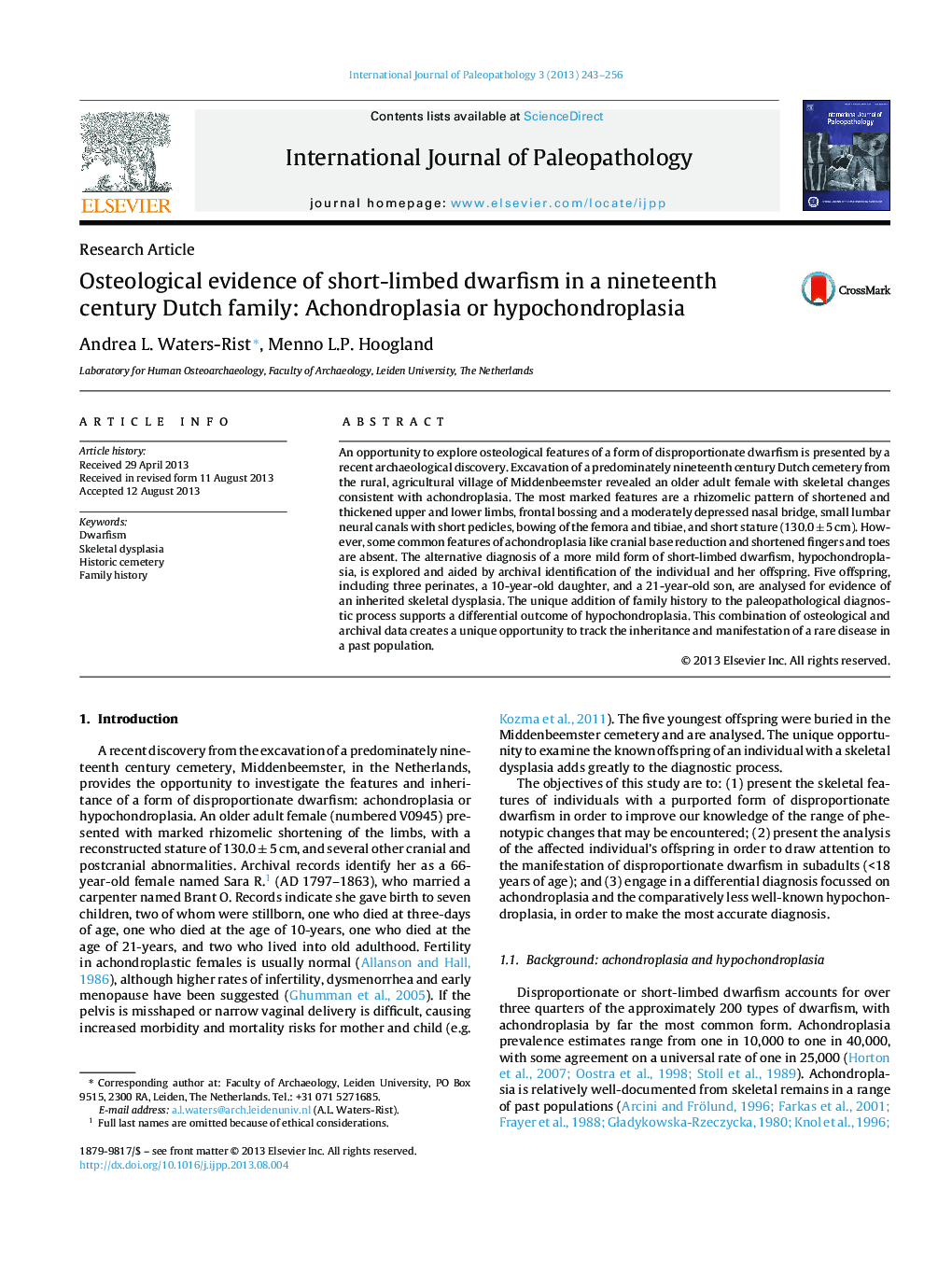| Article ID | Journal | Published Year | Pages | File Type |
|---|---|---|---|---|
| 101390 | International Journal of Paleopathology | 2013 | 14 Pages |
•Manifestation of disproportionate dwarfism in an adult female and five offspring.•Differential focused on achondroplasia and the less well-known hypochondroplasia.•Illustration of phenotypic differences between subadults and adults with dwarfism.•Usefulness of changes besides limb bone shortening, i.e. lumbar vertebrae pedicles.•Probable first case of hypochondroplasia in the paleopathology record.
An opportunity to explore osteological features of a form of disproportionate dwarfism is presented by a recent archaeological discovery. Excavation of a predominately nineteenth century Dutch cemetery from the rural, agricultural village of Middenbeemster revealed an older adult female with skeletal changes consistent with achondroplasia. The most marked features are a rhizomelic pattern of shortened and thickened upper and lower limbs, frontal bossing and a moderately depressed nasal bridge, small lumbar neural canals with short pedicles, bowing of the femora and tibiae, and short stature (130.0 ± 5 cm). However, some common features of achondroplasia like cranial base reduction and shortened fingers and toes are absent. The alternative diagnosis of a more mild form of short-limbed dwarfism, hypochondroplasia, is explored and aided by archival identification of the individual and her offspring. Five offspring, including three perinates, a 10-year-old daughter, and a 21-year-old son, are analysed for evidence of an inherited skeletal dysplasia. The unique addition of family history to the paleopathological diagnostic process supports a differential outcome of hypochondroplasia. This combination of osteological and archival data creates a unique opportunity to track the inheritance and manifestation of a rare disease in a past population.
